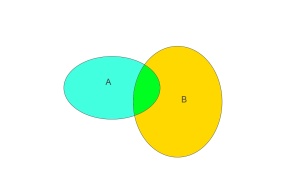In physics, gauge theories are theories of fields. The fields can’t be seen, but they give rise to observables. It’s the observables we measure directly. The fields can be configured in different ways and all these different ways are connected by symmetries. These different configurations give the same observables.
The fact that the observables don’t change is called gauge invariance.
Imagine Mario on a planet. The planet has round stones on the surface and each stone has a pink line pointing in a certain direction. The pink line is a measurement of some potential.
Luigi is on a similar planet, same size, same stones, same everything. Mario wants to tell Luigi what direction the pink lines are pointing on his planet.
So he fixes a flag on the ground. (He’s agreed with Luigi where the flag should be located). 
Then Mario draws yellow lines from the centre of the stones in direction of the flag.
What he has done by planting the flag in the ground is fix a gauge.

Now Mario can read off the angle between the yellow and the pink lines and send the information to Luigi. (They will also need to agree which way round they are measuring things – clockwise or anticlockwise).
Now what if Mario moves the flag?
The pink lines are still in exactly the same position. They haven’t changed and the wind hasn’t changed. 
But the flag is in a different position. The gauge has been changed. So Mario has to draw new yellow lines. Then he measures new angles.
The wind is an observable. The flag fixes the gauge. The observables are invariant under the gauge transformation. This invariance under the transformation is called a symmetry. The gauge transformation in this case is not global – Mario can’t simply add the same amount to each angle when he moves the flag to get the new co-ordinate reading. The transformation is local – it varies place to place, but that doesn’t mean it’s arbitrary.
We can add a few more terrifying terms from physics – the planet is the base space. The stones are a circle bundle. The fibre of the circle bundle are all the possible directions the yellow lines could point in. The yellow lines they actually point in are a section of the circle bundle.
The base space doesn’t have to be a planet. It could be anything. It could be a line. And instead of circular stones on the surface of the planet, we could have lines rising upwards. Then we would have a comb.
Or something like it.
A section of the comb might look like this.
 Which should remind you of a graph of a function because that what it is.
Which should remind you of a graph of a function because that what it is.
So a gauge theory is a field theory and theory will involve group actions on fibre bundles.
The simplest example of a gauge theory in physics is electromagnetism.
The electromagnetic field is the field for the electron. We can’t measure the electromagnetic field directly.
If we split the field into its electric and magnetic parts, the electromagnetic potentials V and A are not observable.
The electric field, E, and magnetic field ,B, are observable. We can measure the electric field by setting up a charged ball and an oppositely charged plate and measuring how fast the ball accelerate towards the plate. We can see the magnetic field when we drop iron filings near a magnet and they form themselves into patterns. Electric fields move charges. magnetic fields deflect moving charges. Place a magnet next to a cathode ray TV screen to see this. It’s natural to think of these fields as vector fields.
And then it is equally natural to think these direction and length of all these vectors are the acceleration at which a small mass would fall down a well. The wells are the potentials.
Only the difference in potential is physically measurable.
To model electromagnetism, we set up a complex line bundle on spacetime. Every point in spacetime has a line of complex numbers growing out of it. They are different lengths, like our damaged our comb. We set a gauge and use this gauge to measure off the potential V.




















